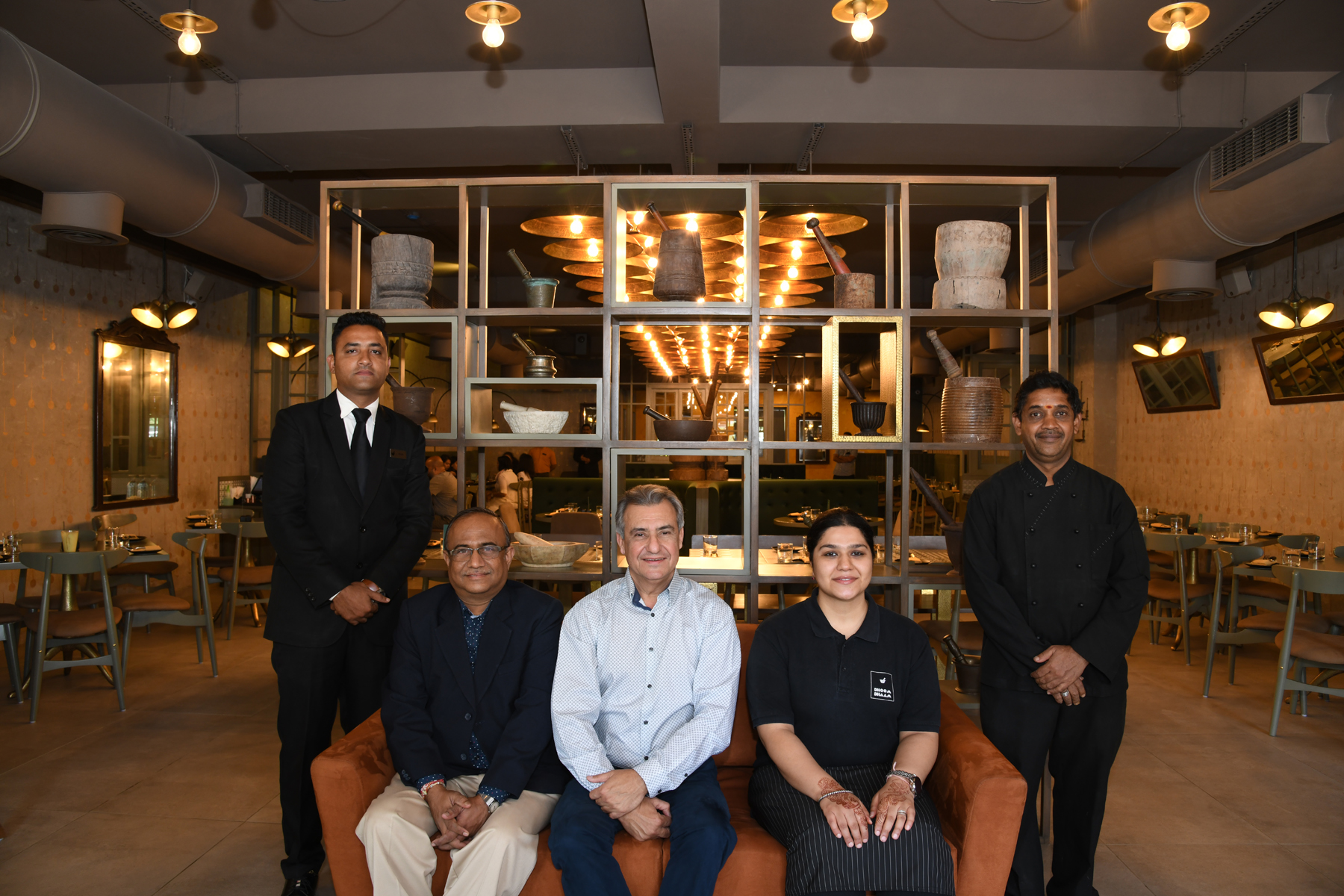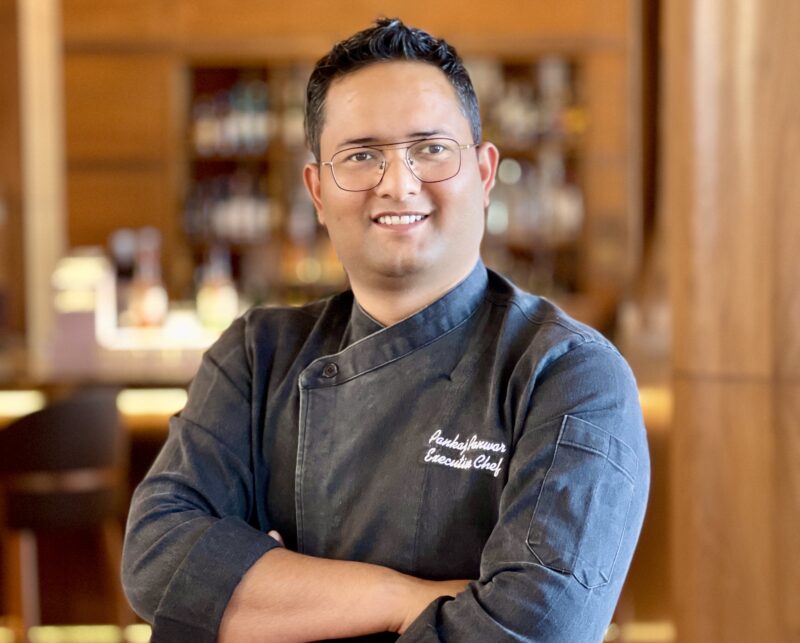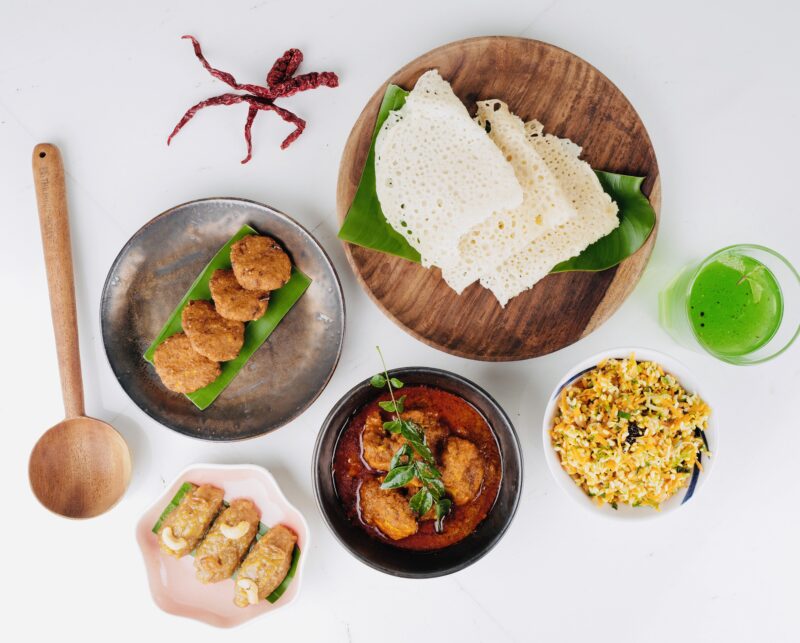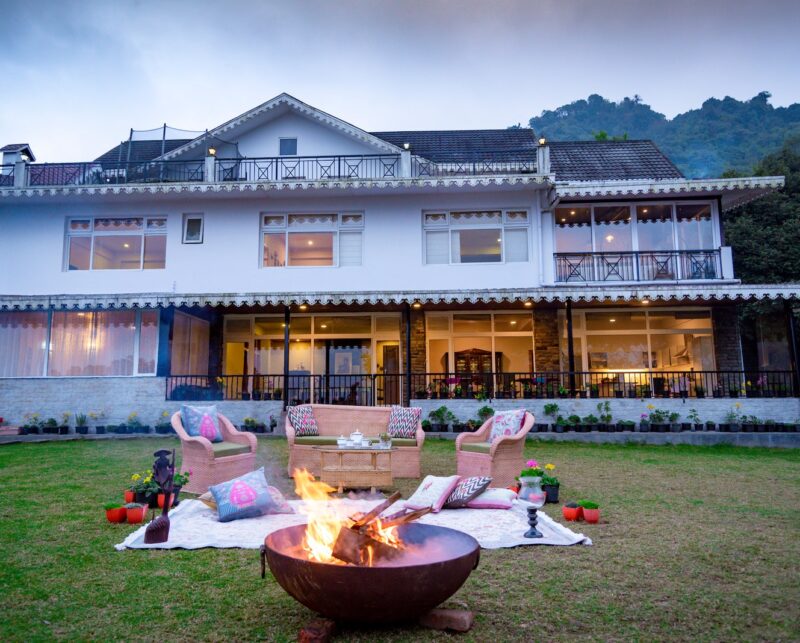Today is Parsi New Year and it resonates in me as a Parsi Chef the love for Parsi cooking and the memories I have of my maternal grandmother’s kitchen cooking the wonderful food of my Mamaiji as I call her.
Like all cultures in India, Parsi cuisine also revolves around religion and rituals. Zoroastrianism was the religion of Persia which was ruled by the Sassanian dynasty, followers of the Prophet Zoroaster or Zarathushtra. Following the Muslim conquest of Persia (present day Iran), Parsis fled their homeland to preserve their Zoroastrian identity. They landed at Diu Island and then Sanjan in South Gujarat, where they first settled. From Sanjan, Parsis moved to other places along the Gulf of Cambay like Khambatt, Udvada, Navsari and Surat. Surat was the centre of trade, where the British East India Company, Dutch East India Company and other European powers set up factories in the 1600s. After 1661, when the British began to develop Bombay as their main port many Parsi weavers and artisans were encouraged to settle here. In 1673, the British handed over a piece of land in Malabar Hill to the Parsi community for the establishment of their first Dakhma, Tower of Silence. Over the decades, Parsi entrepreneurs began to shine in Bombay (now Mumbai) and families like Wadia, Sorabji, Modi, Kama, Jejeebhoy, Readymoney, Dadyset, Petit, Patel, Mehta, Allbless, Tata, etc, became major powers of trade and industry in the city. They then moved to other parts of India for trade or employment.
Over the 1300 years of the Parsi Zoroastrians in India, we can see the cuisine adapting to incorporate influences of geography and culture in the cities where they had settled. As the Parsi’s settled along the southern coast of Gujarat the cuisines which inspired and influenced their cooking the most were the cuisine of the Hindus and Muslims around them. This was followed by Maharashtrian cuisine as they went further south. Later when the British colonized India many official administrative posts were held by the Parsis and the British stayed in bungalows with Parsi landlords. That is why there are strong British influences on the food of the Parsis. I have in my years as a chef explored my community’s cuisine and it has dawned on me that Parsi food has adapted and adopted local ingredients and cooking techniques in order to continue its journey from one household to another. Persian, Gujarati, Maharashtrian and British influences combine to create the repertoire of Parsi dishes that our community enjoys.
The Zoroastrian religion is a blissful religion; it does not advocate any food taboos. It advocates abstinence at times but if observed are more scientific ( or out of respect for other communities living around them) then religious. The Parsis are essentially meat eaters and no meal is absolute without meat, fish, poultry or at least eggs. In the Iranian tradition meat is cooked with vegetables like aubergine, peas, spinach, potatoes, okra, pumpkin, gourds, etc, and compared to other cuisines of India the dishes are lightly spiced. Nuts, apricots and other dry fruit is widely used in Parsi kitchens, and yet another Persian tradition is the use of rosewater or the mixing of rose, saffron and nuts in milk.
The famous Parsi Dhanshak evolved from the Iranian dish Khoresh Esfenaj which a stew made with meat, lentils and vegetables. The recipe varies from region to region or household to household. In India the Parsi Zoroastrians make it and know it as dhanshak which they relish with minced meat kebabs, kuchumber and caramelised rice. Dhanshak is a meal eaten on the fourth day after the death of a near one and is considered nourishing after abstaining from meat for the previous three days. In most Parsi houses, Dhansak is quintessential for Sunday lunch prior to the holiday siesta. Typically, dhansak has meat with different kinds of lentils, beans and vegetables, onions, ginger, garlic, tamarind and masala (mixed spices).
The rava and sev which are the sweet morning ritual dishes are also Iranian but have evolved in Gujarat to what they are today. Both have hints of rose water, sultans and nuts, obvious Persian influences. Sev is decorated and garnished with rose petals and savoured with sweetened curd. Curd has a unique place for Parsis on all important days, sweetened curd is given to every person pursuing important days in a Parsi household. This love for curd and its by products is something the Parsis probably adopted from the Indians. They adopted in their own spirit the bhajias, patrels, bhel pooris, pakodas and paras from their Gujarati and Maharashtrian Hindu neighbours. The famous Sas ni Macchi is adapted from the British method of poaching fish in béchamel sauce – the Parsis make the sauce with rice flour and flavour it with Malt vinegar which is probably the Portuguese influence from Daman which is just a few km from Udvada. The Lagan Nu Custer was adapted from the English Carmel Custard with Persian influences of rosewater and nuts. It is a treat to have this custard pudding when it has been slow cooked on wooden fires for wedding feasts. The vegetarian dishes took inspiration from sweet-and- tangy Guajarati recipes, while meat and chicken was made with different styles from Iranian cooking. Fish which was a sign of plenty and fertility is widely eaten in Parsi homes, probably the result of staying in coastal areas of Gujarat and Maharashtra. Like the people of the Konkan coast, green coconut chutney is used in Parsi fish dishes – an excellent adaptation is Patra ni Mach which is chutney-coated marinated fish steamed in banana leaf parcels,, combining the influences of the white Caspian sea fish wrapped in wine leaves with the cooking of India’s west coast, giving birth to the Patra Ni Macchi (these days restaurants make Patra nu Paneer for vegetarians!). Green chutney is used along with butter on bread to make finger sandwiches for tea, and is stuffed with boiled eggs in Paregi Na Cutles.
Another interesting story is that of the Parsis who worked in the Dutch Factory of Surat and started their own bakeries after the Dutch left. Parsis produce some of the finest bakery products available in india – the batasa (butter biscuit), khari and brune pao are some of their examples. Surat Parsis also swear thatthe Topli Nu Paneer also known as the Surti paneer or khara mora paneer is an Iranian version of ricotta. On auspicious days like birthdays and festivals they eat dhan dar patio. The patio is a sweet, spicy and tangy sauce in which prawns, fish or vegetables are cooked. The mori dhan dal is similar to the Maharashtrian varan, a plain lentil dal with tempering of ghee garlic and cumin. They also make dar ni poori, a rich version of the Puran poori.
Eggs are integral to the Parsi diet – a Parsi will eat eggs over anything – meat, fish, potatoes, tomatos, bhindi (okra), and so forth. The most unusual for me are Malai par Edu and Murghi Par Edu. I recently realized when I heard the famous Parsi Food historian Kurush Dalal talk on a podcast that the malai par edu was a inspiration from the coddle eggs, a British influence.
The Parsis are evident gourmands and enjoy their food. Festivals and occasions are always celebrated with all gusto, so eggs, fish, chicken and mutton are usually all on the menu for weddings and navjotes. Vegetables are a side dish but they also advocate adding dals or vegetables to a meat dish. Last night’s plain vegetables change into today’s breakfast in the form of a Par Edu dish (eggs served over leftover vegetables or meat). They can horde their pantry and make `par edu; even on kharis, wafer or Sali (potato straws). One of the famous Parsi dishes is the Berry Pulao – a rice dish cooked with saffron, a light broth made with mutton chunks and a topping of Iranian zereshk berry, chopped coriander and fried onions.
My home city of Ahemdabad has a population of over 1400 Parsis. The Parsis began to settle in Ahmedabad during the 1800s, and built their fire temple and dokma at Khamasa in the 1840s. The Parsis prospered in the city when the textile industry boomed in Ahmedabad and many other Parsis were employed in government services. In 1960, Rustom Cama who was essentially an automobiles man set up Cama Hotel, which became a trend-setter for the hospitality industry in Ahmedabad. In the 1990s, a Parsi hospitality professional qualified from IHM –Mumbai started Mirch Masala and Tomato’s Restaurants.
However, there was a lack of restaurants in Ahmedabad where anyone could get Parsi dishes. In 2014, Rushad Ginwala started a branch of Tomato’s while the first was called an American Diner with a 1950s and ‘60s theme, the second was called Modern American Diner by Tomato’s (M.A.D. by Tomato’s) on SG Highway. It was decided that Parsi food would be a small part of that menu. Since then MAD by Tomato’s serves Dhanshak, including a vegetarian version, sali murghi, Sali boti, keema par edu and other Parsi dishes. he menu keeps changing every year so the items also keep changing but as the Dhanshak is very famous it is always been on the menu since.
MAD by Tomato’s SG Highway has Dhanshak and other Parsi classics on their Parsi New Year Special Menu.














Awesome 👏 perfectly drafted
The youngster also talks about how the chefs appreciated her hopes to preserve the Parsi culture. They were very encouraging, saying that with a little more practice, I ll go even further. And they kept giving me tips to maintain my confidence, asking me not to think about the camera in front of me when cooking, adds Danishi.